Hawaiian Buzz
As Hawaiian as a pizza with pineapple is… But anyway, the Hyundai Kona has largely disappeared from the showroom floor, leaving only the electric variant available for now.


As Hawaiian as a pizza with pineapple is… But anyway, the Hyundai Kona has largely disappeared from the showroom floor, leaving only the electric variant available for now. Perhaps it could be the best fit for those who would like a more attainable EV, and the added ride height for easier entry and exit.
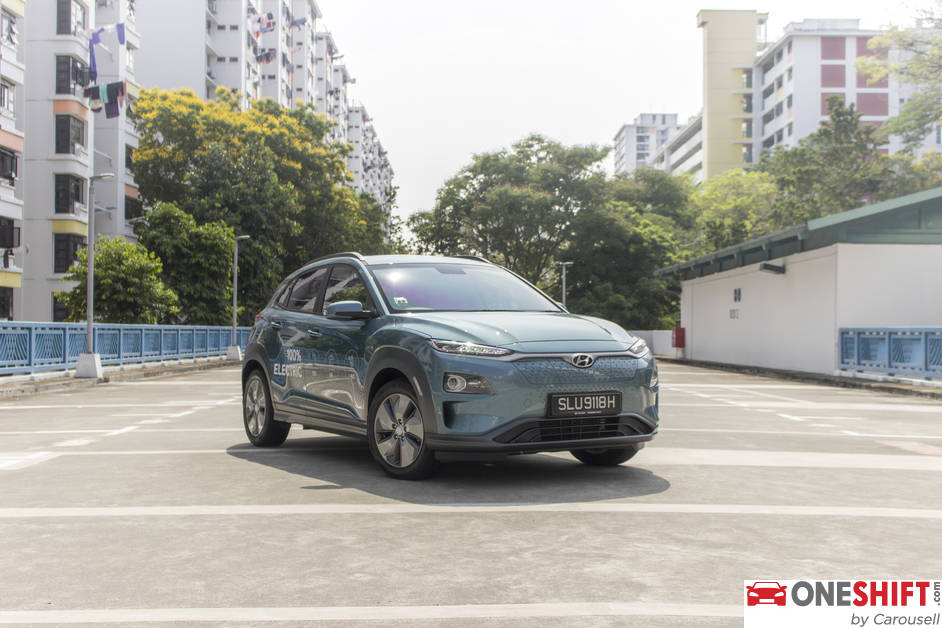
The Kona Electric is easily distinguishable from its fossil fuel-burning counterparts, with its solid front grille which also houses the Type 2 charging point and its slab-sided 17” rims.

Our test car’s interior does little to hide the fact that this is no ordinary Kona, with its (very) light choice of interior colours.
The most prominent difference is with its centre console, which bridges over where it would normally be the gearshift lever, and just like in the EV version of the Ioniq, is replaced by button selectors. The space below now functions as a convenient storage, ideal for ladies handbags. Most of the EV Kona though, remains the same.
Its 7” supervision cluster has a simple, but functional layout, and supports Android Auto and Apple CarPlay. While the interior does feel just a little cheap, it is better screwed together than say… a thai-built Toyota Corolla. But that is expected. After all, the Koreans have truly come a long way.

Interior passenger space is sufficient for 4.5 adults, and if it does matter, the EV Kona sits lower by 20mm than the regular car, which reduces roll around corners, and makes entry into the car that 2cm more difficult… A boon to front passengers are ventilated seats, which are one of the best things since sliced bread; given our weather.
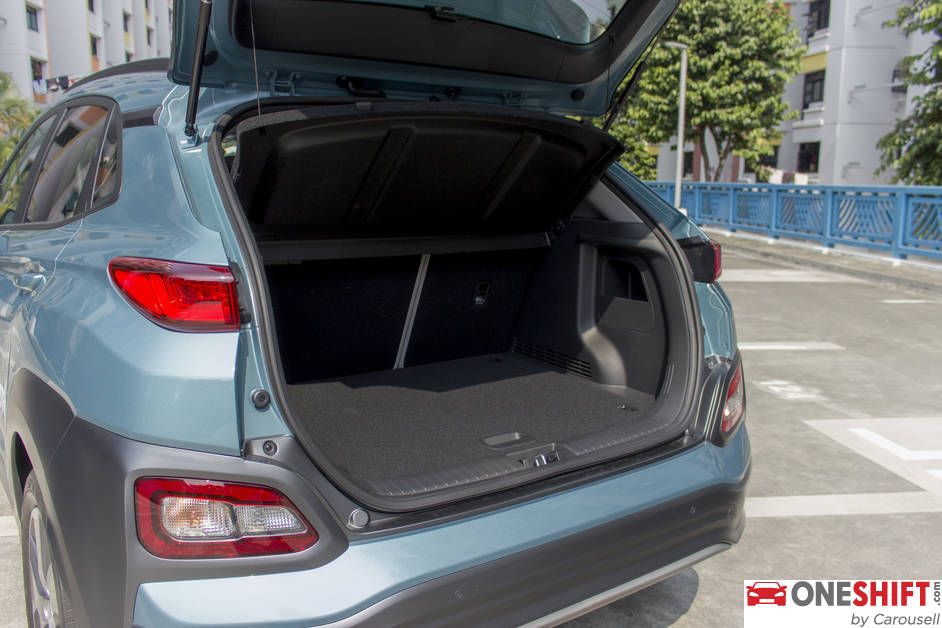
Cargo room of 332 litres is respectable, and expands to a maximum of 1,114 litres with the rear seats folded down.
Hyundai had opted to use a lithium-ion polymer battery pack, instead of a conventional nickel-metal hydride unit. The “Long Range” Kona test car has about twice the range of the Ioniq we tested a while back; translating to a “lab-resulted” range of 482km from a single charge.
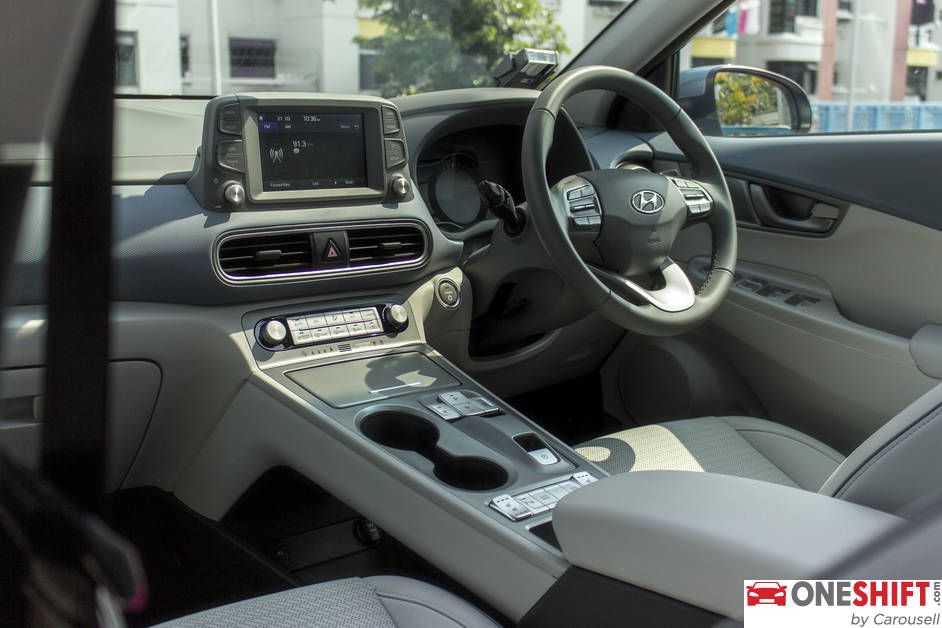
While such practical mileage is posted, In actual fact, you would need to drive the car below most posted highway speed limits to get close to those numbers.
Maximum power is rated at 201bhp, while 395Nm of torque from standstill delivers a firm shove to your back upon takeoff.
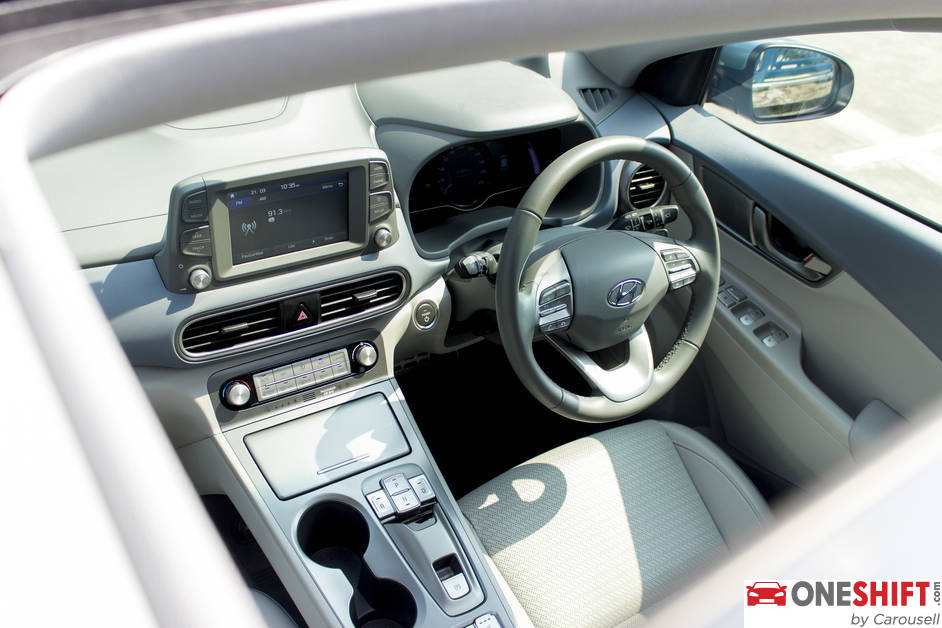
Its century sprint time of 7.6 seconds is quite deceiving to those new to EVs, since a more aggressive initial acceleration does bring forth an impression that you are accelerating much quicker.
Regenerative braking which is commonplace on an EV, forms part of the Kona’s powertrain “ecosystem”. Since the car does not have an engine, there no engine braking when you lift off the pedal, and on EVs, the system not only helps to recharge the battery, but also provides a good deal of assistance in slowing the car down. If you do get this right, you could almost drive with just the use of one pedal around the island.
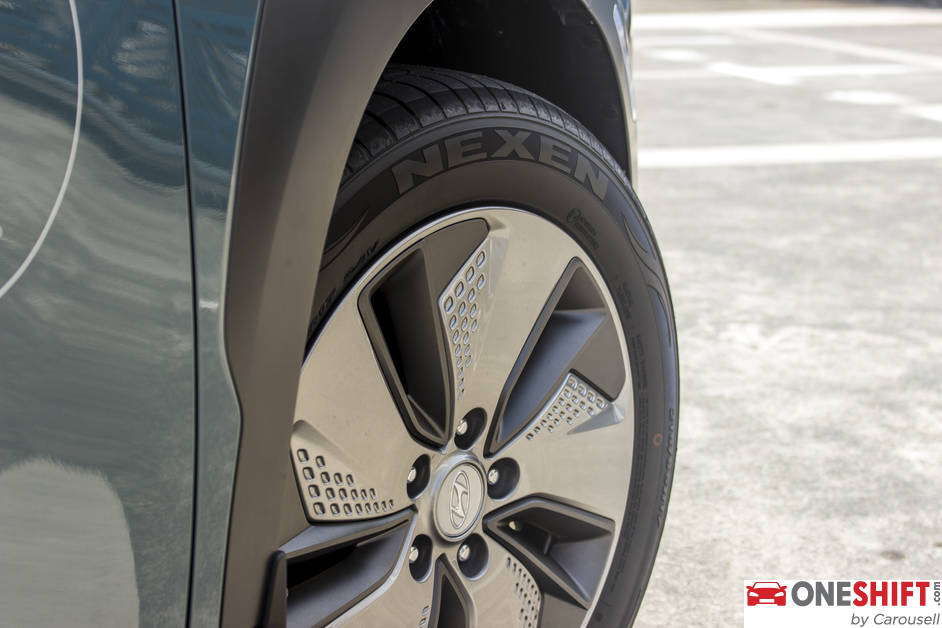
The one feature which Hyundai got right from the start, is to have the regenerative braking adjusters right behind the steering wheel; just like shift pedals. Having them placed there is not only more intuitive than on some other EVs where you have to call up the adjustment panel from within the infotainment screen. In the case of the Kona, you can easily reduce the amount of resistance (also meaning that the system does not recharge the batteries when you lift off), making it much easier to bring the Kona to coast on long uninterrupted straights. There are three settings for regenerative braking, where the most aggressive works well in start-stop situations; and comes in handy during emergency braking.
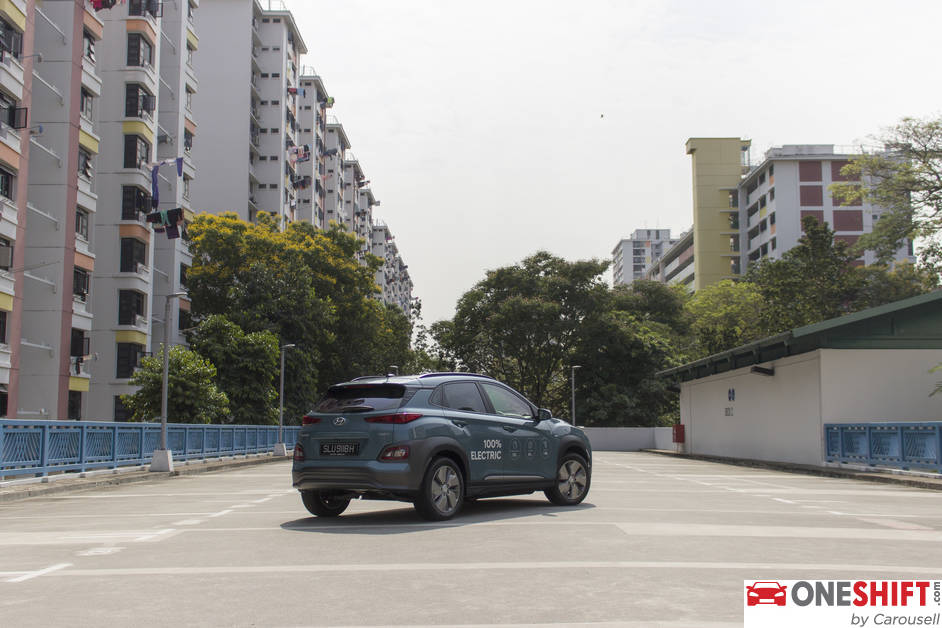
As the Kona is taller than its Ioniq sibling, you can expect a little more roll around the bends. It may not be a driver’s car, but handling is generally good enough for most. With this amount of torque spinning the front wheels only, it can be quite a bit of fun on the wet. Cabin noise is limited to just some intrusion from bumps on the road, louder-than-average vehicles, the air gushing out of the air-conditioning vents and the faint hum of the electric motors doing their thing.
Safety nets includes six airbags, Blind-Spot Collision Warning (BCW), which alerts you to… well cars in your blind spot; and Rear Cross-Traffic Collision Warning (RCCW), which gives you a 180 degree view behind the car, making it easier for you to back out from a nosed-in position.
The “Long Range” model costs a premium with today’s COEs. At approximately $180,000 for our test vehicle, its value proposition is all but lost. You can have quite the selection of SUVs with that kind of money… A decked-out Audi Q2 1.4 goes for around $170k.
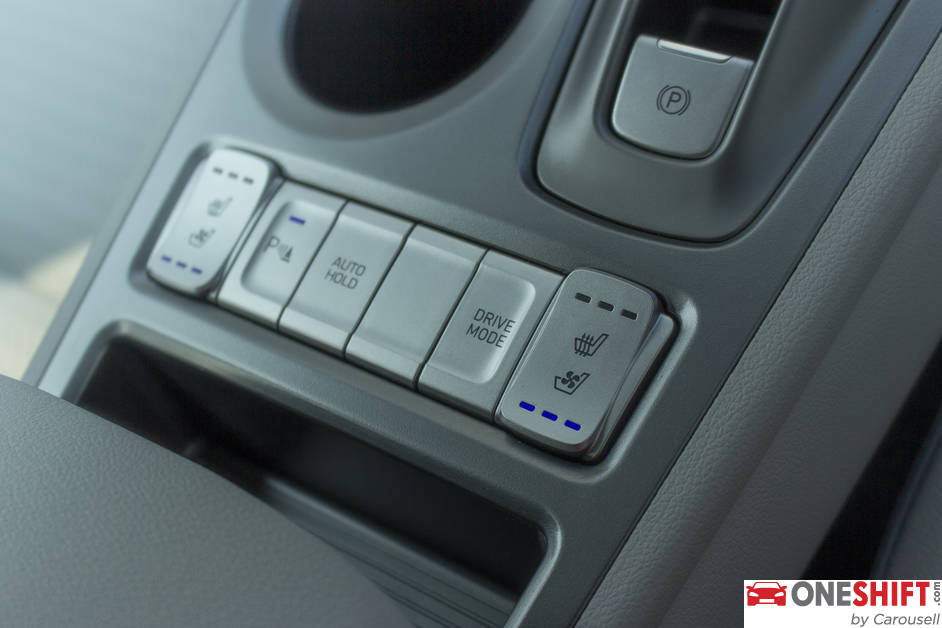
There is the standard vehicle (not-so-long range), which retails for around $26k less, and makes more sense. Even with a maximum posted range of 312km, you would not find yourself easily out of juice in Singapore, unless you are a Private Hire driver.
Both models deliver the same 395Nm of torque, power is lesser for the “standard” car at 134bhp (versus 201bhp), and the century sprint is at a more leisurely 9.7 seconds.
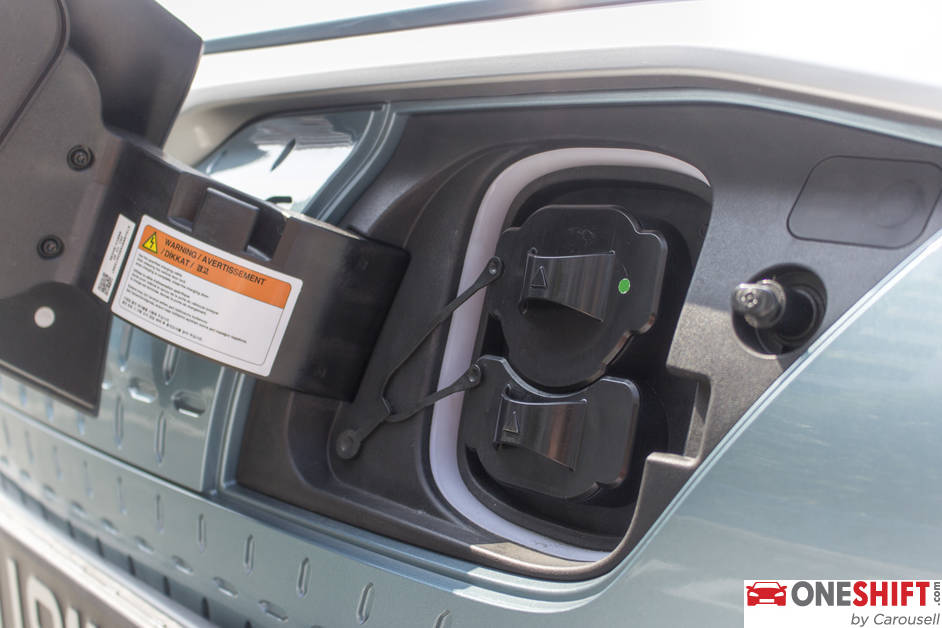
Charging at home is done via a Schneider electric wallbox, which comes with your purchase. A full charge takes about nine-and-a-half hours, which is the approximate time you need to recharge yourself at night.
I could go full electric… or I could opt for the lesser decked-out 1.4 litre Audi Q2, for $20k less, and use the difference to fuel my drive. If you average that out at $100 per-tank, you would be able to top up at the pumps 200 times.

#Hyundai #EV #Kona #Electric #Cars #Autos #SG #Singapore #Roadtest #CarReview #Testdrive Hyundai Singapore
Credits:








Get the Best Price for your used car
from 500+ dealers in 24 hours

- Convenient and Hassle-Free
- Consumer Protection
Transparent Process
With No Obligation








